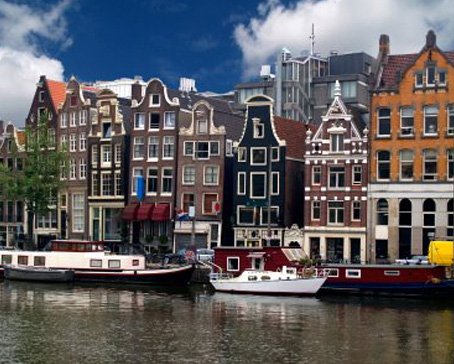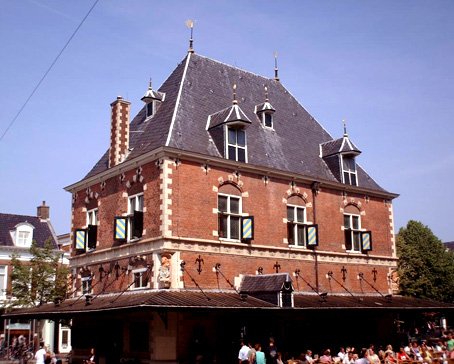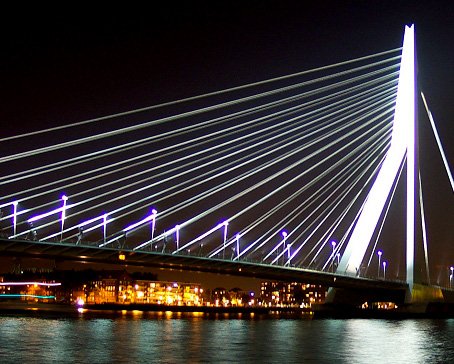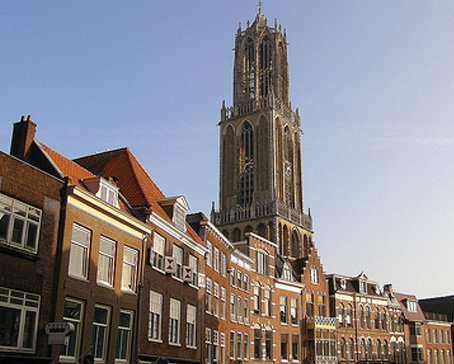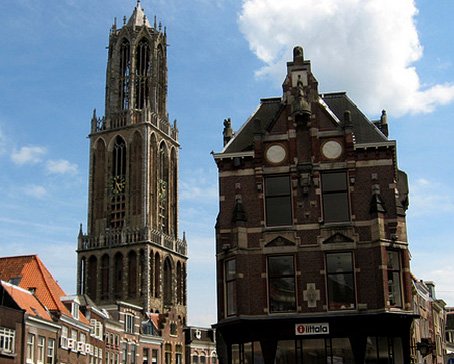-
Amsterdam Canals
Amsterdam, capital of the Netherlands, has been called the "Venice of the North" for its more than one hundred kilometres of canals, about 90 islands and 1,500 bridges Read More -
Anne Frank House
The Anne Frank House located on the Prinsengracht canal in Amsterdam, the Netherlands, is a museum dedicated to Jewish wartime diarist Anne Frank, who hid from Nazi persecution with her family and four other people in hidden rooms at the rear of the building. Read More -
Deltaworks
Flood control is an important issue for the Netherlands, as about two thirds of its area is vulnerable to flooding, while the country is among the most densely populated on Earth. Natural sand dunes and man-made dikes, dams and floodgates provide defense against storm surges from the sea. Read More -
Rotterdam Architecture
Rotterdam is the second-largest city in the Netherlands and one of the largest ports in the world. Rotterdam is also famous for its Kubuswoningen or cube houses built by architect Piet Blom in 1984. In addition to that there are many international well known architects based in Rotterdam like O.M.A (Rem Koolhaas), MVRDV, Neutelings & Riedijk and Erick van Egeraat to name a few. Read More -
Google Maps - Aviation waypoints
A waypoint is a reference point in physical space used for purposes of navigation. Waypoints are sets of coordinates that identify a point in physical space. Coordinates used can vary depending on the application. Read More
-
 Flevoland is a province of the Netherlands. Located in the centre of the country, at the location of the former Zuiderzee, the province was established on January 1, 1986; the twelfth province of the country, with Lelystad as its capital. The province has approximately 394,758 inhabitants (2011) and consists of 6 municipalities.Read More
Flevoland is a province of the Netherlands. Located in the centre of the country, at the location of the former Zuiderzee, the province was established on January 1, 1986; the twelfth province of the country, with Lelystad as its capital. The province has approximately 394,758 inhabitants (2011) and consists of 6 municipalities.Read MoreFlevoland
-
 Gelderland is a province of the Netherlands, located in the central eastern part of the country. Historically, the province (area) dates from states of the Holy Roman Empire and takes its name from the nearby German city of Geldern.Read More
Gelderland is a province of the Netherlands, located in the central eastern part of the country. Historically, the province (area) dates from states of the Holy Roman Empire and takes its name from the nearby German city of Geldern.Read MoreGelderland
-
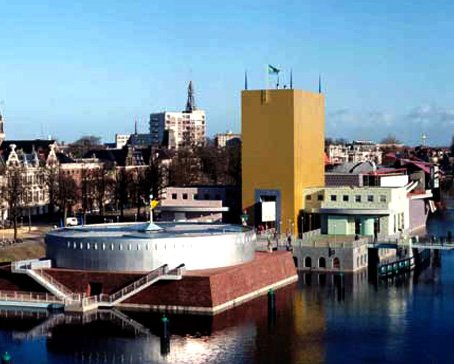 Groningen is the northeasternmost province of the Netherlands. In the east it borders the German state of Niedersachsen (districts of Leer and Emsland), in the south Drenthe, in the west Friesland and in the north the Wadden Sea. The capital of the province is the city of Groningen.Read More
Groningen is the northeasternmost province of the Netherlands. In the east it borders the German state of Niedersachsen (districts of Leer and Emsland), in the south Drenthe, in the west Friesland and in the north the Wadden Sea. The capital of the province is the city of Groningen.Read MoreGroningen
-
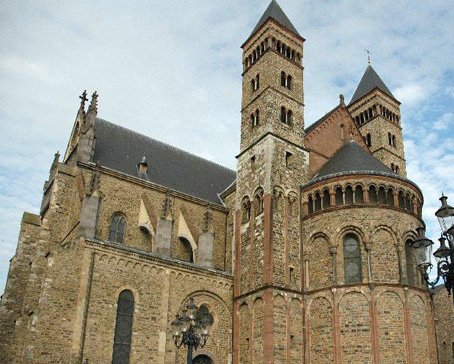 Limburg is the southernmost of the twelve provinces of the Netherlands. It is located in the southeastern part of the country and is bordered by the Dutch provinces of Gelderland to the north and North Brabant to the north and northwest, Germany to the east and Belgium to the south and part of the west. Its capital is Maastricht.Read More
Limburg is the southernmost of the twelve provinces of the Netherlands. It is located in the southeastern part of the country and is bordered by the Dutch provinces of Gelderland to the north and North Brabant to the north and northwest, Germany to the east and Belgium to the south and part of the west. Its capital is Maastricht.Read MoreLimburg
-
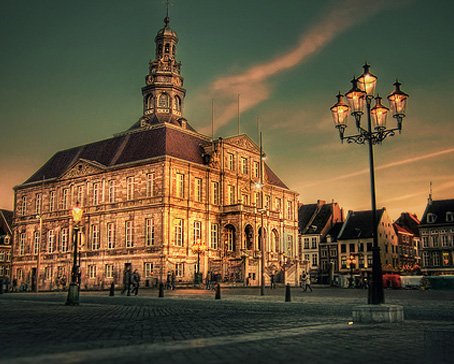 Maastricht is a city in the Netherlands. It is located in the southern part of the Dutch province of Limburg, of which it is the capital.Read More
Maastricht is a city in the Netherlands. It is located in the southern part of the Dutch province of Limburg, of which it is the capital.Read MoreMaastricht
-
 North Brabant (Dutch: Noord-Brabant is a province of the Netherlands, located in the south of the country, bordered by Belgium's Antwerp and Limburg provinces in the south, the Meuse River (Maas) in the north, and Limburg in the east and Zeeland in the west.Read More
North Brabant (Dutch: Noord-Brabant is a province of the Netherlands, located in the south of the country, bordered by Belgium's Antwerp and Limburg provinces in the south, the Meuse River (Maas) in the north, and Limburg in the east and Zeeland in the west.Read MoreNorth Brabant
-
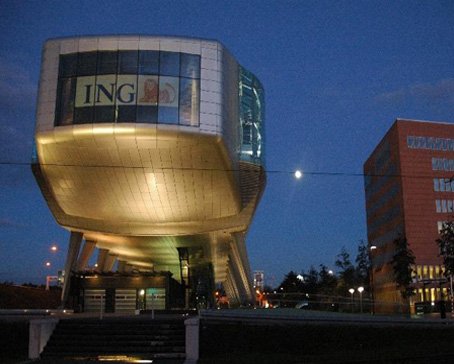 North Holland is a province situated on the North Sea in the northwest of the Netherlands. The provincial capital is Haarlem and its largest city is Amsterdam.Read More
North Holland is a province situated on the North Sea in the northwest of the Netherlands. The provincial capital is Haarlem and its largest city is Amsterdam.Read MoreNorth Holland
-
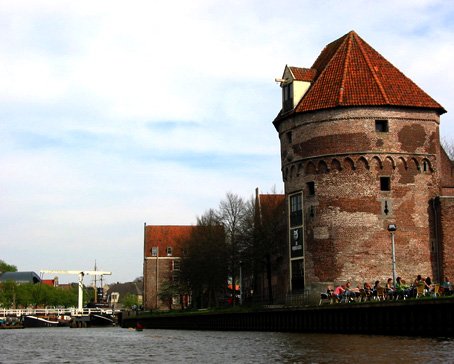 Overijssel is a province[1] of the Netherlands in the central-eastern part of the country. The province's name means "Lands across the river Issel", from the perspective of southern Europe. The capital city of Overijssel is Zwolle and the largest city is Enschede. The province has a population of 1,113,529 inhabitants.Read More
Overijssel is a province[1] of the Netherlands in the central-eastern part of the country. The province's name means "Lands across the river Issel", from the perspective of southern Europe. The capital city of Overijssel is Zwolle and the largest city is Enschede. The province has a population of 1,113,529 inhabitants.Read MoreOverijssel
-
 South Holland is a province situated on the North Sea in the western part of the Netherlands. The provincial capital is The Hague and its largest city is Rotterdam.Read More
South Holland is a province situated on the North Sea in the western part of the Netherlands. The provincial capital is The Hague and its largest city is Rotterdam.Read MoreSouth Holland
Middelburg - Townhall - streetview - Google Maps
- Details
- Category: Streetview Visitholland
Middelburg (Dutch: [ˈmɪdəlˌbɵrx] ( listen)) is a municipality and a city in the south-western Netherlands and the capital of the province of Zeeland. Situated on the central peninsula of the Zeeland province, Midden-Zeeland (consisting of former islands Walcheren, Noord-Beveland and Zuid-Beveland), it has a population of about 48,000.
The city of Middelburg dates back possibly to the late 8th century or early 9th century. The first mention of Middelburg was as one of three fortified towns (i.e., borgs) erected on Walcheren (then an island) to guard against Viking raids. In 844 a monastery was built on the site, which remained an active Catholic foundation until the Reformation. Foundations for Middelburg's "stately and picturesque" cathedral (one of only two pre-Reformation cathedrals in The Netherlands, along with St. Martin's in Utrecht) were first laid in the 10th century; additional construction continued through the Middle Ages.
Middelburg was granted city rights in 1217. During the Middle Ages, it became an important trading centre in the commerce between England and the rising cities of Flanders. The town continued to gain in power and prestige during the 13th and 14th centuries.
From 1559.05.12 to 1603, Middelburg was the episcopal see of a Catholic bishopric covering all Zeeland. In the Eighty Years' War, Middelburg was captured from the Spanish forces during a long siege. The northern provinces of the original Low Countries won their independence from their former Spanish Habsburg rulers and formed The Netherlands, a Protestant state. Later, in the 17th century (the Dutch Golden Age), Middelburg became, after Holland's metropolis Amsterdam, the most important center for the East India Company of Republic of the Seven United Netherlands (VOC) or Dutch East India Company.
Samuel Ben Israel, son of Menasseh Ben Israel, is buried in Middelburg at the Sephardic burial site located at the 'Jodengang' outside the citywall. Menasseh Ben Israel negotiated with Cromwell the opening of England, and their colonies, to the Jews. Middelburg also has an Ashkenazic burial site, which is located at the Walensingel inside the city wall. In 1994 the synagogue was restored, as it was partially destroyed during the Second World War. This synagogue was the third one to be built in the Netherlands during the Golden Age. In the hall of the railway station there is a plaque of remembrance for the Jews of Zeeland who started their journey to the death camps from the Middelburg train station.
About a third of the old city centre was devastated by bombs and fire in the early phases of World War II, on May 17, 1940, it is still not sure whether it were German bombers or French artillery.[5] The town was captured and liberated by British troops during Operation Infatuate on 5 November 1944. After the War, as much of the destroyed part of the old town center was rebuilt and restored along pre-War lines as possible. The city's archives, however, had been incinerated during the German bombardment.
Modern Middelburg has preserved and regained much of its historic and picturesque character. There are lavish 17th and 18th century merchant houses and storehouses standing along canals, of a similar style as found in cities like Amsterdam. The old city moats are still there, as are two of the city gates, the Koepoort Gate and the varkenspoort Gate. Part of the 18th century moat and defence works, however, were demolished in the 19th century to make way for a commercial canal that crosses Walcheren from Vlissingen to Veere. The medieval abbey is still in use today, as a museum and as the seat of the provincial government.
Hotels in Middelburg
Latest articles
- Accommodatie Eurovisie Songfestival 2020 - Rotterdam
- Vermeer - famous Dutch painter from Delft
- Delft - Oude Kerk - Old Church
- Delft
- Enkhuizen - Havenweg - streetview - Google Maps
- Alkmaar - cheese market - Waagplein - streetview - Google Maps
- Hoorn - city center - Roode Steen - streetview - Google Maps
- Veere - Townhall - streetview - Google Maps
- Middelburg - Townhall - streetview - Google Maps
- Vlissingen - Smallekade - streetview - Google Maps
- Zierikzee- streetview - Google Maps
- Oosterschelde- streetview - Google Maps
- Haringvlietdam - Haringvlietsluis - streetview - Google Maps
- Hollands Diep - streetview - Google Maps
- Moerdijk bridges - streetview - Google Maps
- Harlingen - streetview - Google Maps
- Stavoren - streetview
- Dokkum - streetview
- Giethoorn - streetview
- Claire Morgan The Sound of Silence - Noord Brabants Museum
Visitors for Visitholland
We have 85 guests and no members online
